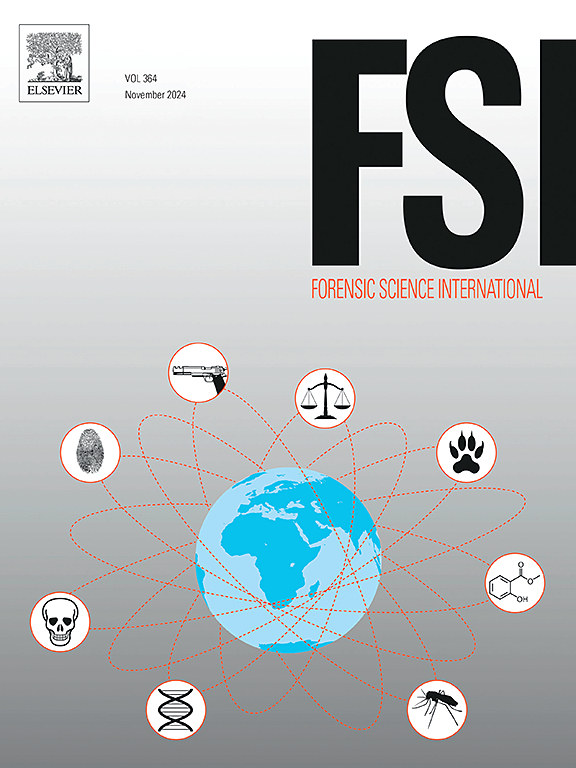Exploring the techniques and challenges for recovering human touch DNA from white rhino (Ceratotherium simum) to combat poaching
IF 2.2
3区 医学
Q1 MEDICINE, LEGAL
引用次数: 0
Abstract
The trade in white rhinoceros (Ceratotherium simum) horns poses a significant threat to the survival of this species and additional investigative tools for rhino poaching cases are essentially required to address this challenge. This study explored additional techniques and challenges for recovering human touch DNA from rhino. Experiments depositing touch DNA on rhino during dehorning projects were carried out. Fifty-five human touch DNA samples were gathered from target regions on 15 rhinos (ears, head, legs, horn and back). Recovery of touch DNA using swabs with different tips and compositions as well as a tape lifting method were tested. DNA profiling was performed using the PowerPlexR ESI 16 kit (Promega). From the readable profiles (n = 35), 34 % partial and 3 % full profiles were reportable and thus it would have been possible to use these DNA profiles to link suspects to criminal activities. The study demonstrated that it is possible to obtain reportable human DNA profiles from rhinos and that the technique should be considered as an additional forensic investigative tool to be used in wildlife crimes.
探索从白犀牛(Ceratotherium simum)中恢复人类接触DNA以打击偷猎的技术和挑战
白犀牛(Ceratotherium simum)角的贸易对该物种的生存构成了重大威胁,为应对这一挑战,基本上需要额外的犀牛偷猎案件调查工具。这项研究探索了从犀牛身上恢复人类触觉DNA的其他技术和挑战。在犀牛去角过程中进行了触觉DNA沉积实验。从15头犀牛(耳朵、头部、腿部、角和背部)的目标区域收集了55个人类接触DNA样本。测试了不同尖端和成分的拭子以及胶带提起法对触摸DNA的恢复。使用PowerPlexR ESI 16试剂盒(Promega)进行DNA分析。从可读的档案(n = 35)中,34 %的部分档案和3 %的完整档案是可报告的,因此可以使用这些DNA档案将嫌疑人与犯罪活动联系起来。这项研究表明,从犀牛身上获得可报告的人类DNA图谱是可能的,这项技术应该被视为一种额外的法医调查工具,用于野生动物犯罪。
本文章由计算机程序翻译,如有差异,请以英文原文为准。
求助全文
约1分钟内获得全文
求助全文
来源期刊

Forensic science international
医学-医学:法
CiteScore
5.00
自引率
9.10%
发文量
285
审稿时长
49 days
期刊介绍:
Forensic Science International is the flagship journal in the prestigious Forensic Science International family, publishing the most innovative, cutting-edge, and influential contributions across the forensic sciences. Fields include: forensic pathology and histochemistry, chemistry, biochemistry and toxicology, biology, serology, odontology, psychiatry, anthropology, digital forensics, the physical sciences, firearms, and document examination, as well as investigations of value to public health in its broadest sense, and the important marginal area where science and medicine interact with the law.
The journal publishes:
Case Reports
Commentaries
Letters to the Editor
Original Research Papers (Regular Papers)
Rapid Communications
Review Articles
Technical Notes.
 求助内容:
求助内容: 应助结果提醒方式:
应助结果提醒方式:


